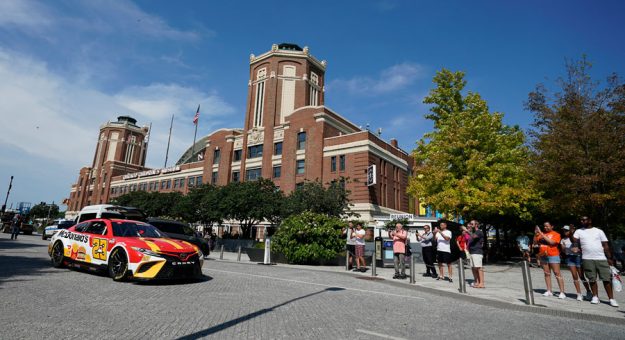WILMETTE, Ill. — Change is constant in motorsports, and adapting is the key to being successful on and off the track.
However, the traditional playbook has been pushed aside during the last few years and NASCAR is not following its traditional business plan.
The NASCAR Cup Series schedule has been radically altered. Long-standing venues are no longer hosting two annual weekends, ovals have been supplemented by road courses, dirt was added to the mix and new locations within major markets were established.
Two of the country’s largest cities have major oval tracks — California’s Auto Club Speedway and Chicagoland Speedway. Both were built in the late 1990s in the away-from-the-city centers. The early years saw sold-out crowds at both with stock cars and Indy cars.
Over time, enthusiasm waned and promoters worked hard to keep fans filling the grandstands. During the shutdown, officials decided to shutter the tracks and move the dates elsewhere.
Prominent cities are important to the lifeblood of motorsports. It is where many people live and corporate headquarters are located. Los Angeles is the entertainment capital and Chicago is the biggest city between the coasts.
The L.A. Memorial Coliseum hosted the season-opening exhibition race, the Busch Light Clash. The venue was converted into a short track that featured close racing. The multi-million-dollar build took several weeks, held on-track action for two days and was returned to a football field shortly thereafter.
Attendance was solid, celebrity concerts were booked, television ratings were high and reviews were positive. The formula worked.
Efforts to bring racing to the streets of Chicago have been ongoing for years. Negotiations were always a challenge with changing administrations, aldermen and ward boundaries.
The growth of iRacing.com during the early part of the pandemic created an opportunity. A new virtual circuit through Grant Park showcased the city’s lakefront. The layout was featured for an eNASCAR iRacing Pro Invitational Series event televised live on FS1 in June 2021.
Taking a virtual event to the real world is not an easy task. There is a lot to be accomplished and many political hoops to jump through.
Yet, in July, NASCAR announced a Chicago street race would be held on July 1-2, 2023. After the celebratory press conferences and stock car burnouts, reality set in.
Details matter and there is a lot to cover for a major event like this. Chicago is no stranger to hosting activities on its lakefront, so familiarity does factor in. Municipalities will have many entities involved in this planning process. NASCAR entered into a permit agreement with the Chicago Park District, which oversees the grounds around Grant Park.
The initial deal with the city of Chicago is for three years — 2023, ’24 and ’25. There is an option to extend the contract for an additional two years for a total of five years.
Planning, constructing, operating and taking down a race course in a city is a complex project. NASCAR has been given a general staging window of 21 days prior to the race and 10 days after. The on-street construction timeline is shorter at nine days pre-race and three days post-race. NASCAR will get use of various park properties such as the Petrillio Band Shell.
What about the money? NASCAR will pay Chicago a permit fee of $500,000 in year one, $550,000 in year two and $605,000 in year three.
In addition, the city will receive $2 per ticket sold, excluding corporate suites and VIP passes. Chicago already has an existing tax of nine percent on sporting event tickets. A net food and beverage commission of 15 percent, 20 percent and 25 percent will be added to the city’s coffers over three years.
NASCAR retains broadcast rights and sponsorship sales. Expect companies such as McDonald’s to have a major presence at the race.
A total amount paid to the city of Chicago has not been estimated. Post-race settlements will determine this.
Comparisons are being made to the Lollapalooza music festival. This successful event has been held in Chicago for more than 20 years, annually attracting almost 400,000. The city gets about $6 million for those payments.
Will the Chicago street race measure up?
Time will tell if the economic model of a street race will be a Windy City success.
